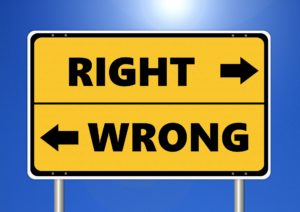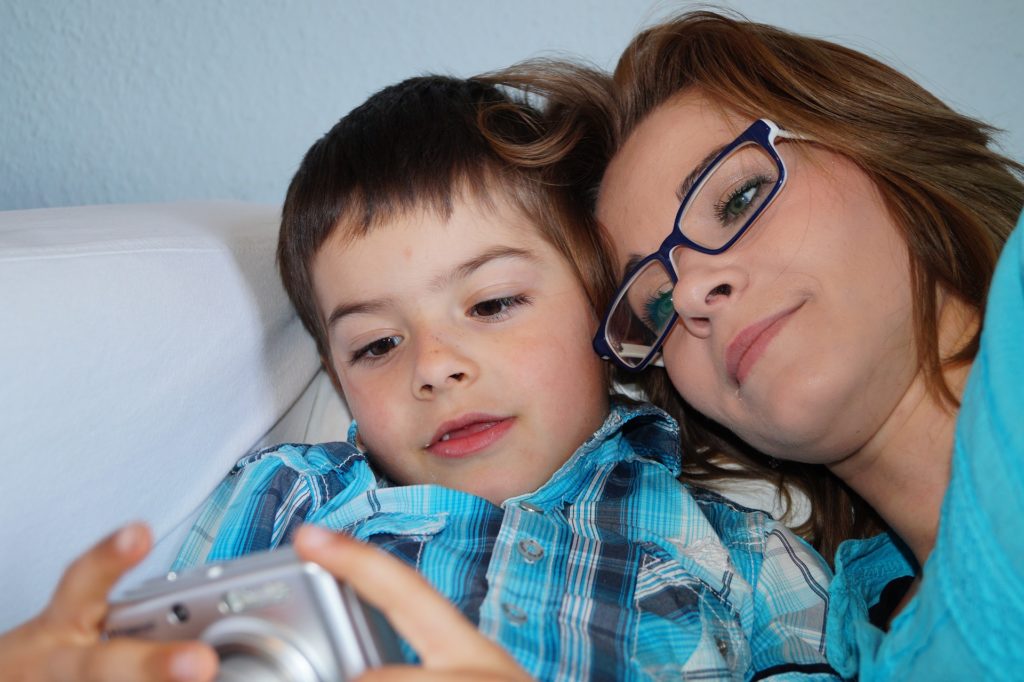As much as parents want to protect their young children from growing up too fast, thanks to the internet, media, and other new factors, it’s more difficult to shield them from the realities of the world. As a mother, I can only shield them so much, but I know I can’t totally protect them from reality and they’ll have to learn sensitive topics like sex, violence, and politics one day.
So, when your child asks you to explain what democrats and republicans are, what’s the best thing to say? Some parents may brush off their child’s curiosity or say something that is a blatant lie just to get them to stop asking questions (which is always a bad idea). I recommend, however, that it’s best to be honest with your child. But since it’ll be hard for them to understand the true politics between republicans vs. democrats, here’s what you can tell them.
Explain Democrat vs. Republican with Examples

The best way to explain complex topics like the difference between republican and democrat is to use examples they would understand. Here’s an example you can use to explain one difference between the two.
Let’s say that there are 10 kids who all chip in to buy a large pizza. The restaurant provides only three flavors – pepperoni, 4-cheese, and Hawaiian . Their group can only afford to buy one pizza, but not everyone wants the same flavor.
The government is a lot like this. For the government to work, everyone gives the government money (your child doesn’t need to know about the word “taxes” just yet because that’ll open the gates for a lot of questions that could derail the conversation). It is the government’s job to decide how that money will be spent so that most of the people will be happy with the results. However, many people have different ways that they think the government should spend the money, which is why there are different types of governments like democratic and republican.
Going back to the pizza example, a democratic group would handle the situation differently from a republican group. If the group were democrates, they will choose the pizza flavor that most people want. So, if 4 kids want pepperoni, 3 kids want 4-cheese, and 3 want Hawaiian, then the group will go with the flavor with the most votes. It doesn’t matter that the kid who chipped in the most money wants a 4-cheese or Hawaiian because they were outvoted.

Now, let’s say that the restaurant only has two flavors, 4-cheese and pepperoni, and 5 kids want 4-cheese and 5 kids want pepperoni. If this happens, the 4-cheese kids will try to get one of the pepperoni kids to change their vote (for example, tell the pepperoni kids that they’ve tried the pepperoni here before and it wasn’t that good) and vice versa (the pepperoni kids will say that plain cheese pizzas are underwhelming). This will go on until one group gets the bigger vote.
On the other hand, if the kids were Republican, they would handle their dilemma differently. They wouldn’t choose pizza flavors based on what most people want, but based on the key members of the group. Let’s say that the 10 kids chose one of them, Aaron, to be the one to represent the group and place their order. Therefore, Aaron gets to decide the flavor. He’s not going to please everyone with his decision, but because they all agreed Aaron will represent them, they have to accept his decision.
There are more differences between Republicans and Democrats, and your child might press further or you want to see how far you can teach them without overloading them with information. You, as an adult, might be leaning towards a certain political ideology. But if you want your child to understand the differences between the two without biases, here’s what you should generally say to a child.
The Government’s Role

When you have characters like Mr. Mayor from The Powerpuff Girls, the role of government offices isn’t very clear to a young child. Your child may be curious about learning about the government and why they hear about it often in the news, so when talking about democrats and republicans, it’s better that they understand that the role of a government depends on how people see them.
The Republicans believe that it is the responsibility of the people and communities to take care of people in need. There’s a belief that those who are capable have a responsibility to help those who are less capable, and the government should focus its efforts that help everyone. Democrats, on the other hand, believe that it should be the government’s responsibility to help the less capable and not delegate the task to the people.
So, if your child has experienced seeing a homeless person or any person in need of assistance, this can help them understand. A Republican government believes that the people who are capable of helping these people (as well as churches and groups dedicated to helping these people) should be the ones to provide assistance. Under this government, democratic supporters would not like this because it puts the burden of responsibility on the people. Because what is the purpose of giving the government our money when we’re doing (what Democrats believe to be) their job for them?
On the other hand, a Democratic government will provide laws and measures so that these less fortunate will be helped. A republican supporter will not like this, especially if they are middle or upper-class because these measures will not benefit everyone. So, why should they give money for a government that provides special treatment?
Right vs. Wrong

It’s so much easier to teach kids right vs. wrong as both black and white. However, teaching kids about the basics of a democratic vs. republican government requires teaching them a bit about a grey area where a person can be neither right nor wrong. I think a lot of people, in an effort to believe they are right about their own political views, forget that a government was established by people for a sense of order and that (in a world without corruption and republican and democratic politicians are just trying to do their job), there is no right or wrong way to run a government.
I’ve seen other parents online try to explain democrat vs. republican to their kids, and it is seeping with biases. Going back to the pizza example, a biased Republican looking at the Democratic example and a biased Democrat looking at the Republican example will see things differently.
For example, if a biased Republican parent were to explain a Democratic government to their child, it would sound something like this: The 10 children will vote on a pizza, majority vote will win on what pizza they should pick, but everyone (especially those with more money) will be forced to shell out more money when the minority complain and demand a pizza of their own.
On the other hand, a biased Democrat will explain it this way: the kid that gets chosen to be the representative will pick what he and his friends want over what the majority wants and only cares about himself.
While you may be tempted to share your political views with your child, I find that it’s more practical to share the general definition of democrat and republican governments without adding the scheming and politics we see on the TV today. To put it simply: give your child the basic definitions of how both political ideologies treat the government, and then let them figure out the rest at a later age.
So, leave out the corruption allegations, the scandals, and everything dirty about politics when your child asks. They’ll have plenty of time to form their own opinions of the government when the time is right. But for now, a simplified (but not too simplified) and relatable definition and example of the government is the best explanation you can give to a young child.




